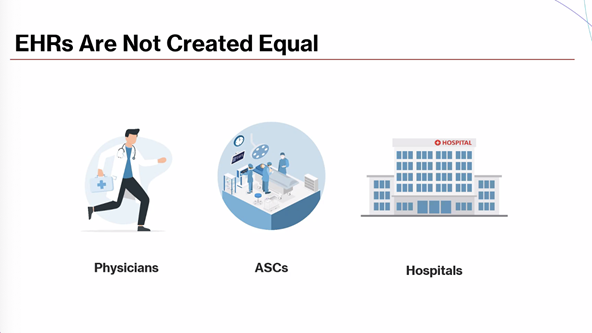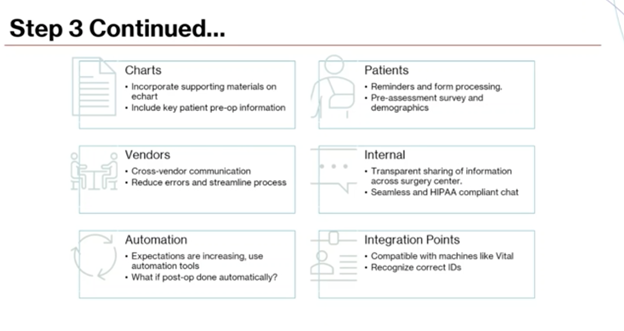HST Pathways Associate Explains the Importance of Electronic Health Records in Your ASC
On June 10, Bob Marinich, head of sales for HST Pathways, talked to Texas Ambulatory Surgery Center Society members about implementing electronic health records successfully in their surgery centers.
In the past, EHRs received a bad name because they were slow and hard to use, Marinich said. They were designed by programmers rather than the people who would be using them. Today, though, EHRs are significantly better, due to technological advancements and an increasing understanding of healthcare needs. Still, less than 10% of ASCs are utilizing EHRs. This is in part due to their poor history but also because these programs are not subsidized and have no CMS guidelines.
However, things are beginning to change. “The ASC is starting to say, you know what, we need to embrace this,” Marinich said. “Paper is good, and it’s relevant, but it’s just outdated.” Paper is configurable and fast, but the problem with it is something Marinich refers to as paper-based friction — “Every time you touch it, it costs you money.”
As this industry begins to shift, ASC staff need to work together to figure out what kind of programs will work best for them.

Every EHR is created differently, and so Marinich brought up what he calls the Goldilocks Effect, because you don’t want something too hot or too cold — it should fit your ASC just right. In order for ASCs to pick the most effective EHR system for their staff, Marinich offered a three-step process to find what best fits your specific needs.
Step 1: Find the Right Team
“When you talk about getting the right team in the room, you want to go to the people who have ownership,” Marinich said. They should be the people with the most stake in using the EHR system, and they should be ready to adapt to the new technology. You should have a cross-functional work team, Marinich said, with nurses, physicians, anesthesiologists and even your material manager. A cross-functional team is critical to evaluate what your ASC needs and what you will try to do with the EHR system.
Step 2: Create a Baseline
In order to create a baseline, the team should take a step back and look at their day-to-day work life. They should find the points of friction where paper is exchanged, figure out any points of confusion and start looking at the big picture. From there, the team can evaluate what they know about their processes and what they want to change, as well as what they don’t know and need to find out. This evaluation will be key to finding out what kind of system will work best in your ASC.
Step 3: Understand Your ASC Needs
At this point, you can take the processes you figured out in your baseline and begin to ask which actions are manual and where you can start implementing electronic records. As you're putting the big picture together, you should think about where you want to end up. “I want to be able to have the information flow from the physician’s office into my EHR,” Marinich said. He also talked about using automated pre-assessments and text message reminders to help with workflow in the facility. “You want to look for opportunities for efficiency.”

From here, you can continue to build up the programs. You want to create an ultimate goal for what your ASC’s electronic health records will look like and figure out how much automation you can effectively integrate to create those opportunities for efficiency. Marinich’s best advice for creating this system is to start small, integrate one piece at a time and get those small wins that will add up.
“The best chart you will find out there is the one where they say, ‘I spend less time in the chart and more time with the patient,’” Marinich said. The workflow should be so intuitive you can spend the most time on patient care rather than charting care.

